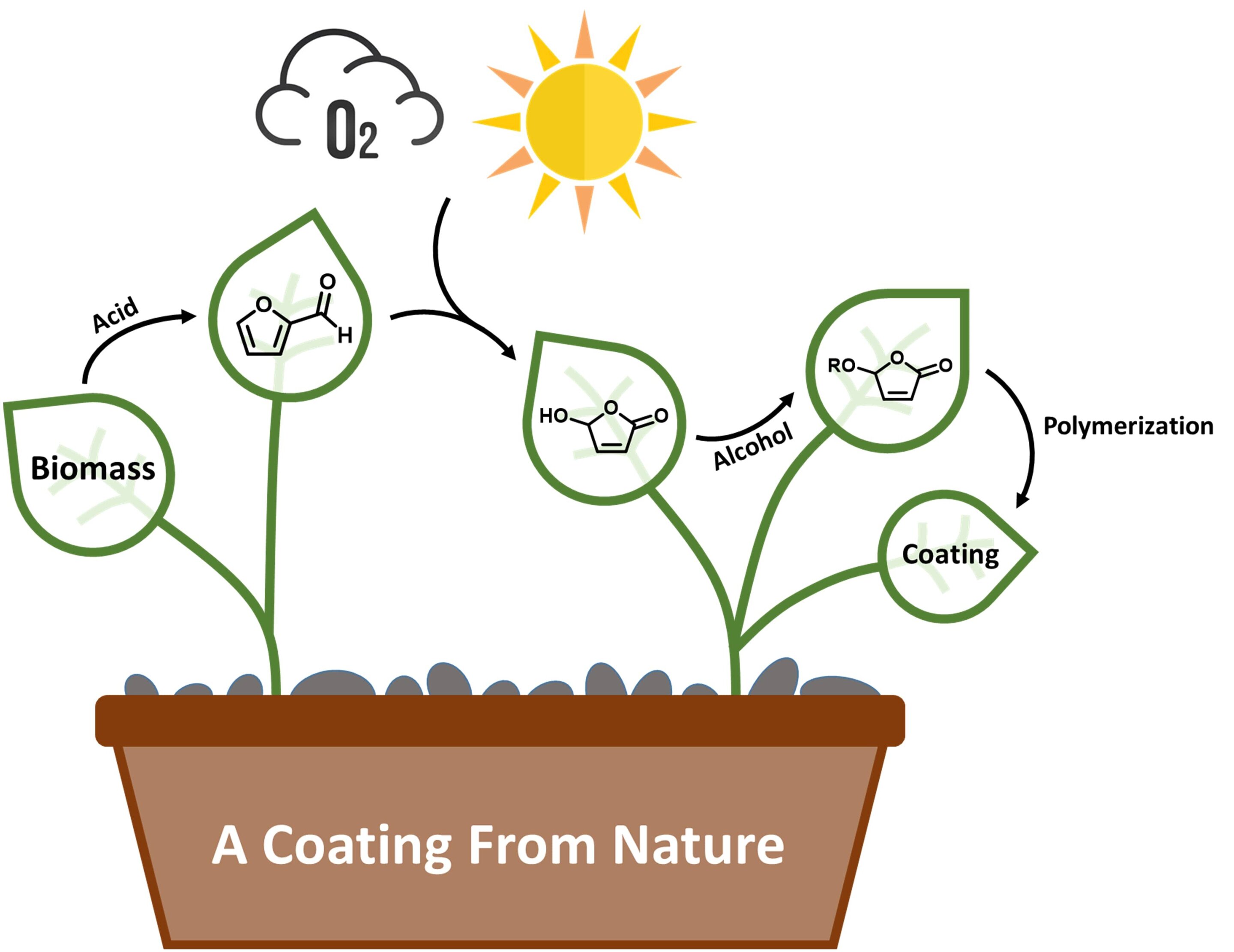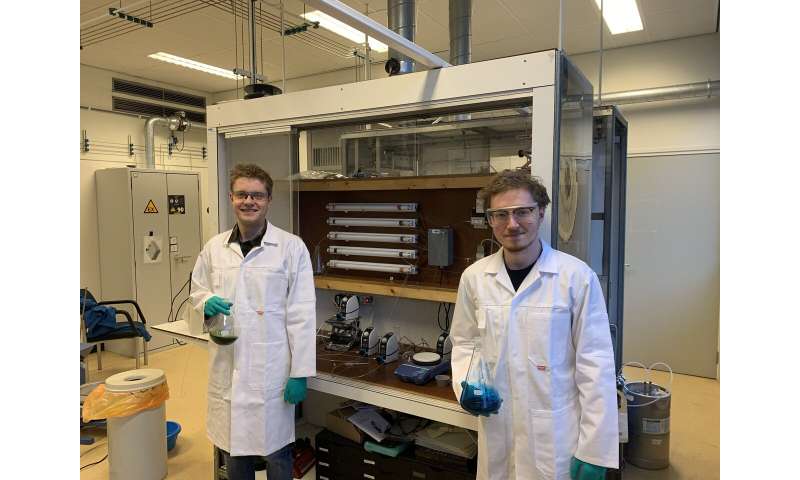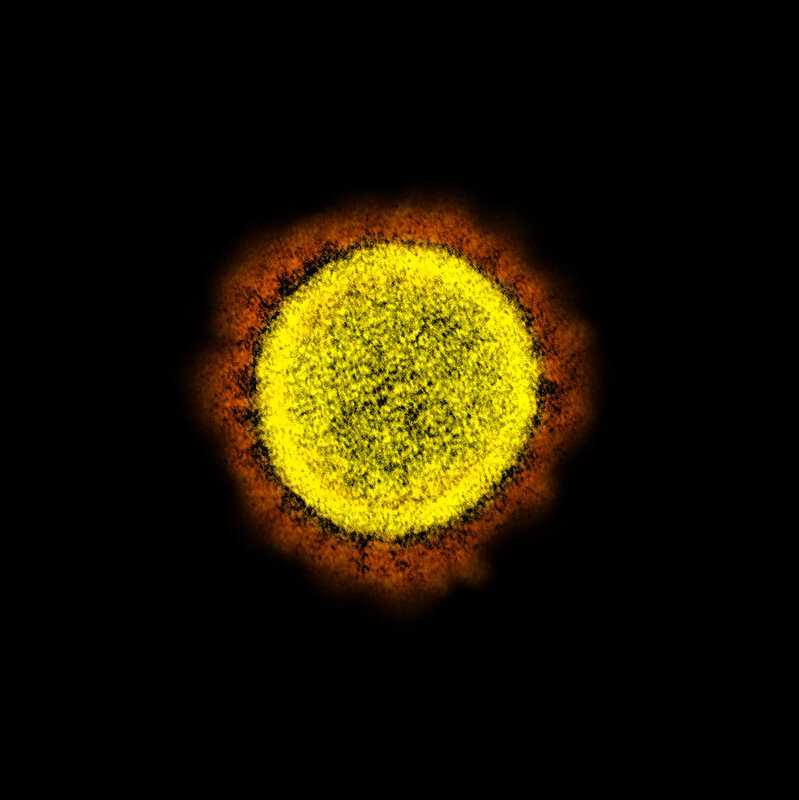#Green chemistry creates coatings from nature

“#Green chemistry creates coatings from nature”

Organic chemists from the University of Groningen and the Dutch multinational company AkzoNobel, a major global producer of paints and coatings, developed a process that allows them to turn biomass into a high-quality coating using light, oxygen and UV light. This process combines a renewable source with green chemistry and could replace petrochemical-based monomers such as acrylates, which are currently used as building blocks for coatings, resins and paints. A paper on the new process was published in the journal Science Advances on 16 December.
Coatings are everywhere, from the paint on your house to a protective layer on the screen of your smartphone. They protect surfaces from scratches, the weather or everyday wear. Most coatings are made up of polymers based on acrylate monomers, with the global production of acrylate exceeding 3.5 million tons a year, all produced from fossil fuel oil.
To make these coatings more sustainable, scientists from the University of Groningen, led by Professor of Organic Chemistry Ben Feringa, teamed up with scientists from coating producer AkzoNobel. “We wanted to use lignocellulose as the starting material,” says George Hermens, a Ph.D. student in the Feringa group and first author of the paper in Science Advances. Lignocellulose makes up 20 to 30 per cent of the woody parts of plants and is the most abundantly available raw biomass material on Earth. Currently, it is mainly used as a solid fuel or used to produce biofuels.
“Lignocellulose can be cracked with acid to produce the chemical building block furfural, but this needs to be modified to make it suitable for the production of coatings,” explains Hermens. He used a process that has been developed in their group to convert the furfural into a compound, hydroxybutenolide, that resembles acrylic acid. “The chemical conversion uses only light, oxygen and a simple catalyst and produces no waste. The only side product is methyl formate, which is useful as a replacement for chlorofluorocarbons in other processes.”

Part of the structure of hydroxybutenolide is similar to acrylate, but the reactive part of the molecule is a ring structure. “This means that it is less reactive than acrylate and our challenge was to further modify the molecule so that it would produce a useful polymer.” This was achieved by adding different green or biobased alcohols to the hydroxybutenolide, creating four different alkoxybutenolide monomers.
These monomers can be transformed into polymers and coatings with the help of an initiator and UV light. “Coatings are made up of cross-linked polymer chains. By combining different monomers, we could get cross-linked polymers with different properties.” For example, while all polymers would coat glass, one combination was able to also form a coating on plastic. And by adding more rigid monomers, a harder coating was formed, with properties comparable to those of coatings on cars. In this way, these coatings are adaptable for different purposes.
“We managed to create coatings from a renewable source, lignocellulose, using green chemistry,” concludes Hermens. “And the quality of our coatings is similar to that of current acrylate-based coatings.” For two steps in the process, patent applications have been filed with AkzoNobel, the industrial partner in the project. Hermens is now working on a different building block derived from furfural to produce other types of polymer coatings.
Ultraheavy precision polymers
Johannes G. H. Hermens, Thomas Freese, Keimpe J. van den Berg, Rogier van Gemert and Ben L. Feringa: A coating from nature, Science Advances, 16 December 2020. DOI: 10.1126/sciadv.abe0026
Citation:
Green chemistry creates coatings from nature (2020, December 16)
retrieved 16 December 2020
from https://phys.org/news/2020-12-green-chemistry-coatings-nature.html
This document is subject to copyright. Apart from any fair dealing for the purpose of private study or research, no
part may be reproduced without the written permission. The content is provided for information purposes only.
If you liked the article, do not forget to share it with your friends. Follow us on Google News too, click on the star and choose us from your favorites.
For forums sites go to Forum.BuradaBiliyorum.Com
If you want to read more Like this articles, you can visit our Science category.



